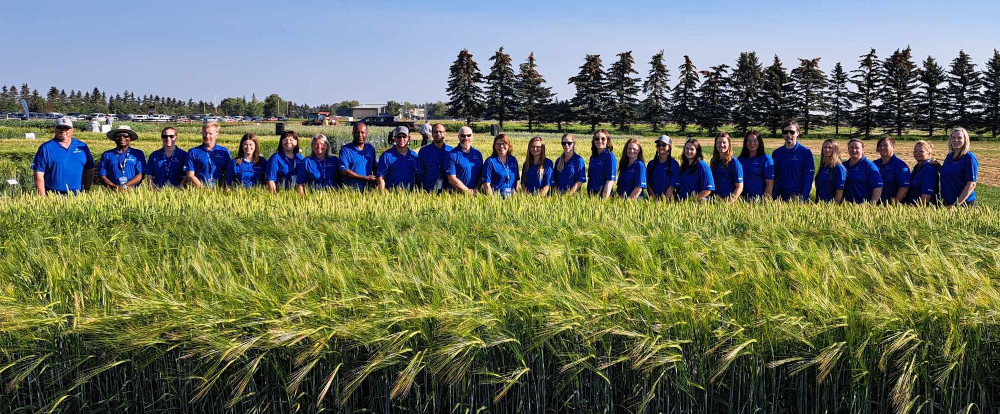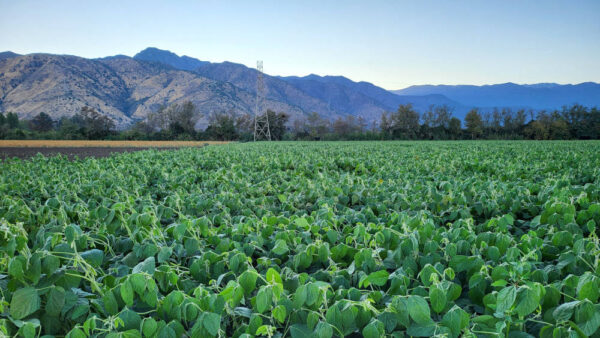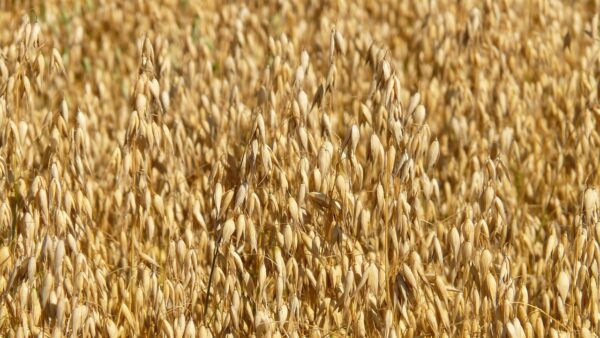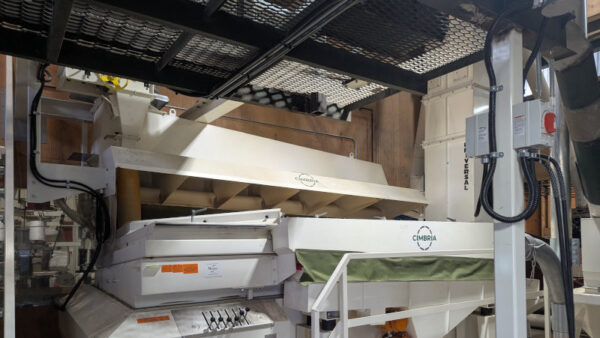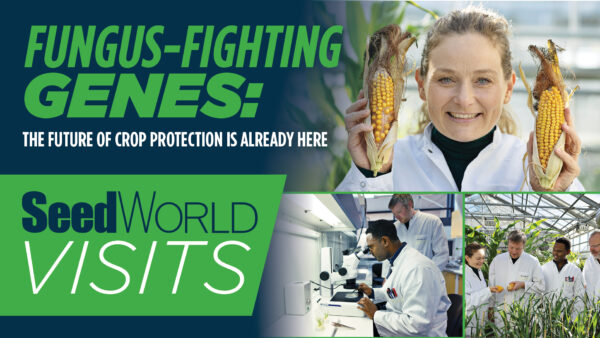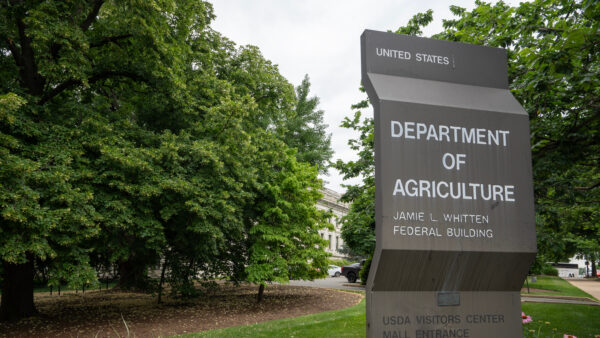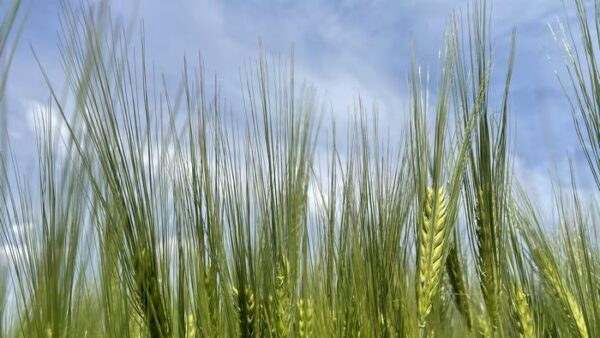The Olds College Field Crop Development Centre has big goals as 2030 approaches, including seeing its barley varieties dominate the western Canadian landscape.
In the vast prairies of Alberta, Olds College’s Field Crop Development Centre (FCDC) stands as a beacon of innovation and research. The FCDC’s commitment to applied research has driven it to seek effective means of disseminating its findings and creating a positive impact on the farming community.
One such avenue that aligns with its mission is AgSmart, an annual event held in Olds, Alta., dedicated to showcasing cutting-edge agricultural technologies. The coming together of the FCDC’s annual Field Day and AgSmart last month proved to be a natural fit.
The FCDC Field Day took part in conjunction with AgSmart for the first time from Aug. 1-2. FCDC Program Director Kofi Agblor and Olds College VP of Development Todd Ormann sat down for an interview to discuss the significance of the two events taking part together and what the future holds.
The mission of the FCDC lies in its dedication to plant breeding and new seed varieties, specifically barley and triticale. While conducting research is essential, it becomes even more meaningful when its benefits are shared with the wider community, the pair said.
This is where AgSmart steps in, providing a key venue for the FCDC to showcase its research. This union between research and technology creates a holistic and enriching experience for farmers, ranchers, and industry professionals.
“This goes beyond mere event collaboration. It’s about creating an environment that bridges the gap between seed and smart technology,” Ormann said. “We believe that for any other tool to truly revolutionize agriculture, we must begin with the most fundamental of technologies — high-quality seed.”
As the saying goes, “it all starts with a seed.” To demonstrate this critical aspect, the collaboration aims to showcase the seed value chain as an integral part of the industry, Ormann said.
https://youtu.be/uCZEHVuOJo8
The Birth an Alliance
The idea of the FCDC Field Day — traditionally held in Lacombe — joining forces with AgSmart emerged when staff realized the potential synergy between the two events. With just a few days separating both AgSmart and the FCDC Field Day this year, a proposal was put forward to merge them instead of keeping them separate.
“The partnership with AgSmart has tremendous potential to drive advancements in breeding and other technology. With technologies like drones and digital imaging becoming integral to phenotyping, breeding is no longer confined to vast fields to assess thousands of plants manually,” Agblor said.
“Instead, it benefits from the data-rich insights brought about by smart technologies. These advancements make breeding more efficient, precise, and instrumental in shaping the future of agriculture.”
While the partnership between the FCDC Field Day and AgSmart was a resounding success, there are challenges on the horizon. Securing stable funding for long-term breeding initiatives is crucial to sustain progress, Agblor added. The college is committed to helping navigate these challenges and bringing future leaders to the table to help secure the FCDC’s future, Ormann said.
https://youtu.be/15nYmLHNVm0
Smart Seed
Nowhere is the concept of smart technology more apparent than in plant breeding and seed, and the FCDC made that fact front-and-centre at the field day held Aug. 2.
The journey from a summer student at the FCDC to a seasoned research scientist has been nothing short of unique for Lori Oatway, who has revolutionized cereal quality assessment at the FCDC.
Oatway’s journey began unexpectedly when she transitioned from a university research role to joining the FCDC as a summer student due to changes in funding. This unplanned shift allowed her to discover her love for research and laid the foundation for future contributions.
The evolution of her career and the impact of her work highlight the incredible potential of technology in advancing agricultural research and breeding programs. Her passion for research led to the development and implementation of near-infrared spectroscopy (NIRS) in cereal quality assessment at the FCDC.
This innovative technology fascinated her, as it offered a new way to analyze various components within cereal grains without the use of chemicals.
The most significant advantage of NIRS was its speed. Oatway and her team could analyze thousands of samples using this technology every year, with results generated in mere seconds. This efficiency was a game-changer for their breeding program.
“We’re exploring how to leverage our lab’s expertise in near-infrared technology. Our goal is to integrate it with combines. Imagine the impact of conducting assessments right in the fields without the need for lab testing. The technology has advanced to the point where combines can analyze protein, moisture, and more on the spot. This could revolutionize the way we work,” she said.
“What if we could predict how a cow would digest certain crops? Or determine the quality of malt a crop would produce before it’s harvested? This kind of insight could speed up our selection processes significantly.”
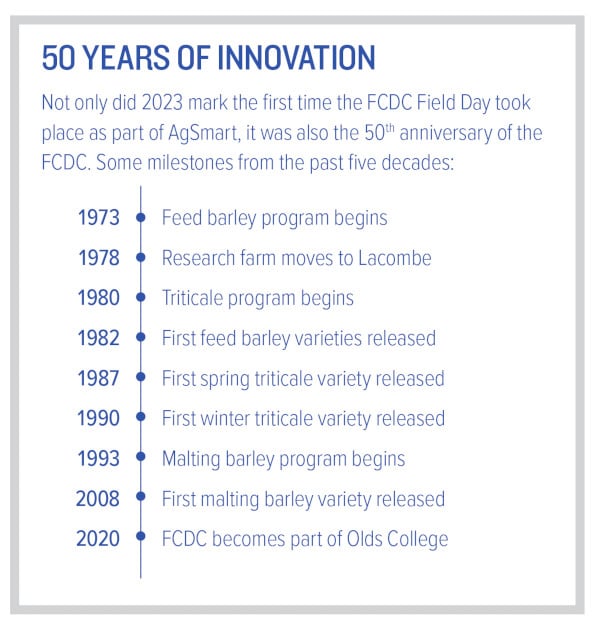
She’s particularly curious about how the industry might go beyond simple biomass measurement and delve into assessing finer quality characteristics.
The Path to 2030
It all feeds into the FCDC’s long-term vision for the future. Since the FCDC’s transition to Olds College a few years ago, the FCDC implemented a strategic plan. One of its initial steps was engaging with stakeholders to identify key focus areas. Recently, FCDC completed a science plan that outlines the methodology to achieve the goals set out in the strategic plan.
FCDC Business Development Officer Erin Collier noted that plant breeding is a long-term endeavour, and the varieties the FCDC is working on today won ‘t be available for licensing for almost a decade. That means long-term planning is necessary.
“It’s crucial to incorporate industry and producer feedback to ensure our trajectory aligns with future needs. Our science plan is aimed at 2030, a mere seven years away. We’re determined to establish FCDC as a center of excellence for barley and triticale breeding. We’re striving to have FCDC varieties grown on most barley acres in Western Canada>” she said.
“That goal might seem lofty, but with the changes we’re implementing — from modernizing operations to focusing on efficiency — it’s within reach.”


